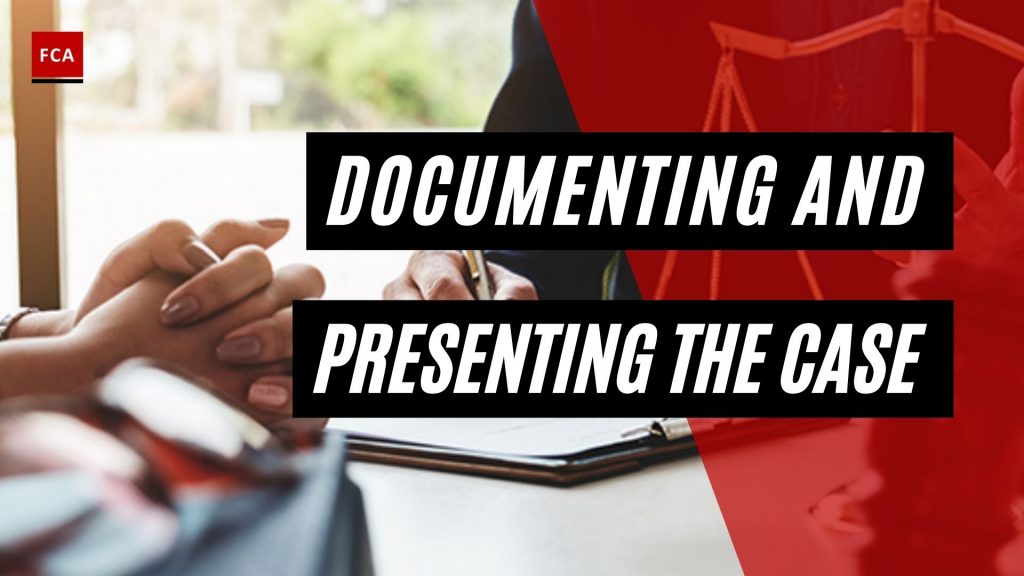Documenting and presenting the case. The entire investigation should be conducted by preparing some kind of final report. The decision of whether to produce a written or an oral report can be made late in the process. Counsel must proceed with the proper care in preparing the report. By recognizing the likely uses of the report, either by the client or by law enforcement, regulators, or private litigants, counsel can prepare the report to best serve the client’s interests.

Documenting And Presenting The Case
While the following section describes the preparation of a written report, the principles articulated apply equally to an oral report. Even if it is decided early in the process to prepare only an oral report, counsel should begin assembling an outline of a report early in the investigative process. The work product doctrine should protect this outline.
Facts can be added or changed to the outline as the investigation continues. In addition, the outline should contain citations of the source of the information so that it can be tracked quickly if necessary. What follows is a description of the various general subject matters that may be addressed by the report, along with a brief explanation of each.
Background and Mandate
The first section of the report should address the procedural background that led to the retention of counsel to conduct the investigation. This should describe the counsel’s understanding of all of the events leading up to its retention. This section will also lay out the counsel’s understanding of the posture of the matter before the investigation to provide context to later portions of the report. If the investigation was undertaken according to an outside mandate, such as from a bankruptcy examiner or as part of a settlement, that information should be disclosed in this section.
Perhaps most importantly, this first section should also contain an explicit identification of the client (i.e., whether it is the company, the board, or a special committee) and a description of the counsel’s mandate in undertaking the investigation.
The report should state in clear and precise terms exactly what issues counsel was hired to investigate and what limitations, if any, were placed on counsel by the client. The report should state whether counsel was limited to investigating the matter that led to the investigation in the first place or whether counsel had to explore any related matters as deemed appropriate. Finally, to obtain the maximum protection of the attorney-client privilege, this section of the report should explicitly state that counsel was retained to provide legal advice to the client.
Executive Summary
This section should provide a summary of the findings and conclusions. This makes it easier for the reader to review the report, particularly if the written report is extensive. Also, since persons with different agendas and objectives may read the written report, an executive summary should be written for readers with various perspectives.
Review of the Investigation
The next section should focus on reviewing the steps taken to conduct the investigation. This section can note the time it took to conduct the investigation, the number of counsel who worked on the investigation, the total number of hours worked on the matter, the number and types of documents collected and analyzed, all of the locations visited and searched for relevant documents (including storage facilities), the number and identity of the people interviewed, and whether any outside experts were retained and consulted.
It is also important to identify any witnesses who declined to cooperate or were otherwise unavailable and the reasons they provided, as well as, to the extent possible, a description of any known documents or data that could not be reviewed. Finally, counsel should provide a narrative assessment of whether they believe they had sufficient cooperation from the client and others to conduct the investigation. Clients and others who are aware that this will be discussed in the report of an investigation may be more likely to be fully cooperative in the course of the investigation.
Findings
This section should lay out a narrative description of the relevant facts. The organization of this section will depend on the number and types of matters that were investigated. In some instances, this section may lay out the facts in chronological order, while in other instances, it may make sense to group the facts by, for example, transactions, business groups, or issues. However, it is organized. This section may include either a detailed recitation of the facts or a more summary-type description.
The contents of this section will serve as the basis for the later legal conclusions and recommendations. To the extent that the report will include significant details, it is crucial to the credibility of the report as a whole that counsel should be able to identify the basis for every statement in this section. If assertions by witnesses are contradictory or conflict with documentary evidence, that should be stated clearly, but in a non-inflammatory manner, focusing only on the fact of the inconsistency. Any areas where counsel was unable to verify information or where there are questions as to the accuracy or authenticity of particular documents or information should also be noted and explained.
Conclusions
This section is significant as it provides an assessment of the potential legal vulnerabilities of the company based on the facts identified during the investigation. The report should lay out the legal standards used and be limited to only those facts discussed in the “Findings” section. The structure of this section is heavily dependent on the purpose of the investigation. If, for example, the investigation was intended to determine the pervasiveness of a particular practice within a company, the legal conclusions section may focus on the potential liability of the company and particular employees for offenses related to that practice.
On the other hand, if the investigation is being undertaken as, for example, counsel to a bankruptcy examiner, the focus of the legal conclusions may be an assessment of the relative strength of the bankruptcy estate’s claims for recoveries against various parties. In laying out its legal conclusions, counsel may want to address those laws that may have been violated or those claims that can be asserted and violations or claims that it considered but found lacking in support.
This can help the client by providing a framework for analyzing potential culpability should new information come to light. More importantly, a well-reasoned discussion of why the company’s conduct was not violative of any law or regulation can be used by the company to persuade the relevant authorities that charges against the company are not warranted.
Final Thoughts
Evidence is anything used to support your claim. Evidence can include a photograph, a letter, business documents or records, and a variety of other items. All properly admitted evidence will be considered by the judge or jury. Evidence is more credible and reliable than what a person says. In a domestic violence case, for example, if you claim that your ex-boyfriend has left you threatening messages but he testifies that this is an absolute lie, the judge may be unsure who to believe. If you submit one of these messages, however, the judge is more likely to believe you. Evidence can also help someone understand something.








